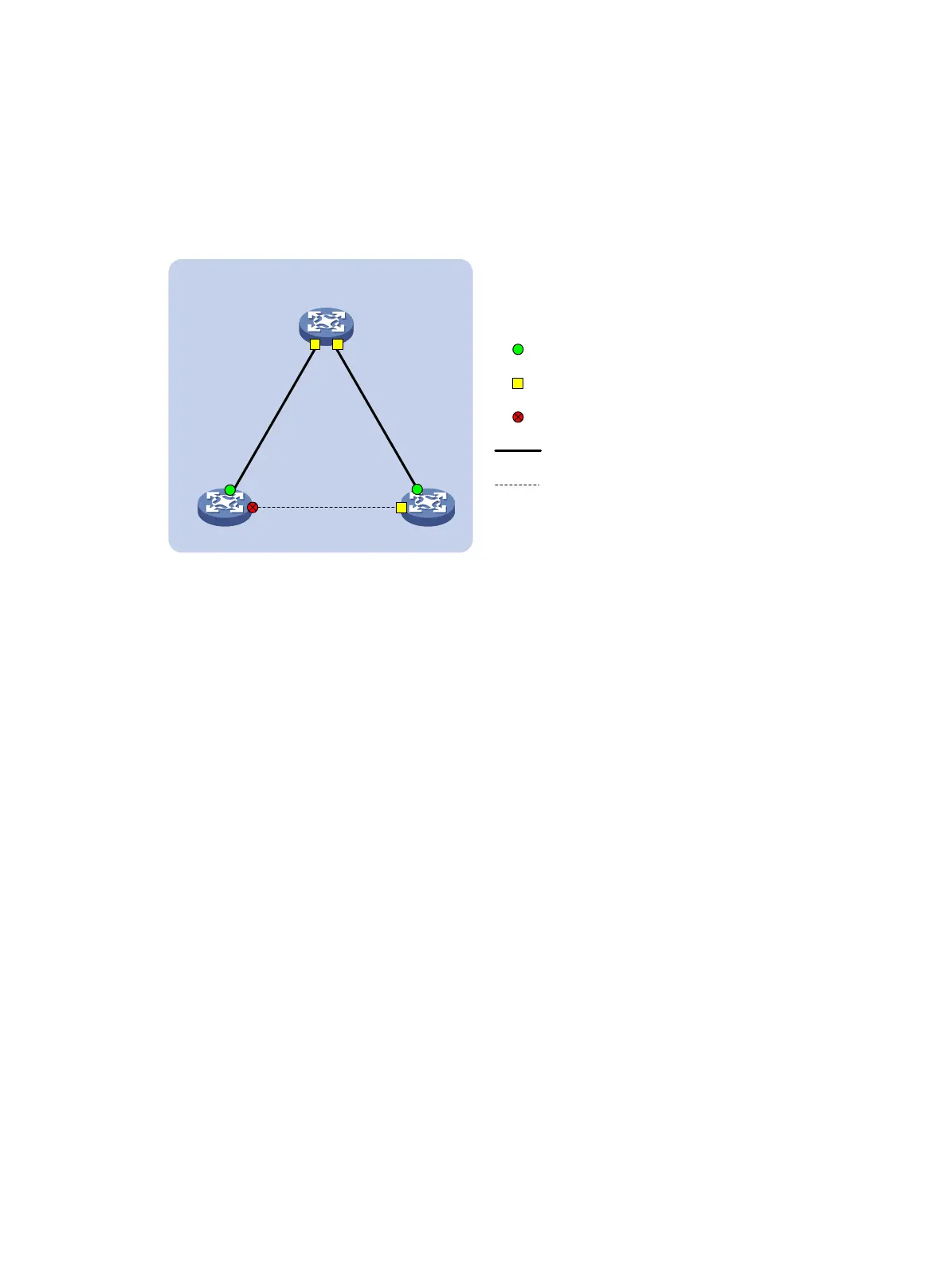As shown in Figure 17:
• Device A and Device B connect to Device C, which is a third-party device. All these devices are in
the same region.
• Enable Digest Snooping on the ports of Device A and Device B that connect Device C, so that the
three devices can communicate with one another.
Figure 17 Digest Snooping configuration
s
Device C
(Root bridge)
Eth1/0/1 Eth1/0/2
Eth1/0/1
Eth1/0/2
Eth1/0/1
Eth1/0/2
Root port
Designated port
Normal link
Blocked link
Blocked port
Device A Device B
MST region
2. Configuration procedure
# Enable Digest Snooping on Ethernet 1/0/1 of Device A and enable global Digest Snooping on
Device A.
<DeviceA> system-view
[DeviceA] interface ethernet 1/0/1
[DeviceA-Ethernet1/0/1] stp config-digest-snooping
[DeviceA-Ethernet1/0/1] quit
[DeviceA] stp config-digest-snooping
# Enable Digest Snooping on Ethernet 1/0/1 of Device B and enable global Digest Snooping on Device
B.
<DeviceB> system-view
[DeviceB] interface ethernet 1/0/1
[DeviceB-Ethernet1/0/1] stp config-digest-snooping
[DeviceB-Ethernet1/0/1] quit
[DeviceB] stp config-digest-snooping
Configuring No Agreement Check
In RSTP and MSTP, the following types of messages are used for rapid state transition on designated
ports:
• Proposal—Sent by designated ports to request rapid transition
• Agreement—Used to acknowledge rapid transition requests
Both RSTP and MSTP devices can perform rapid transition on a designated port only when the port
receives an agreement packet from the downstream device. RSTP and MSTP devices have the following
differences:
75

